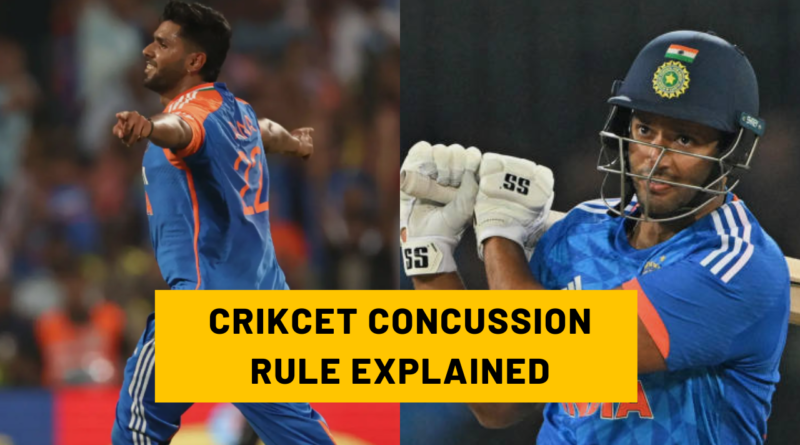How does Concussion Substitute Rule work in Cricket?
The fourth T20I played between India and England sparked a controversy among the fans and experts. To recall, Harshit Rana was called in as a substitute for a like-for-like replacement for Shivam Dube. During the last over of the first innings, Shivam Dube was concussed after getting hit on the helmet grill by a fierce bouncer from Jamie Overton although, Dube continued and got dismissed just after the next delivery.
India used Harshit Rana as a like-for-like replacement for Shivam Dube in the second innings. Harshit played his part beautifully by taking 3 crucial wickets and helped India win the match and series on his debut. This has ignited a heated debate in the cricketing world. Some experts pointed out the loophole that India exploited. Everyone needs to calm down, as India did everything according to the rule mentioned.
A similar situation happened in the 1st T20I of 2020 against Australia when India included Yuzvendra Chahal as a concussion substitute for Ravindra Jadeja. It caused a lot of heated debate back then as well.
Let’s understand what a concussion rule in cricket is and how the replacement is allowed:
What is a Concussion in cricket?
A concussion is a form of mild traumatic brain injury caused by a direct blow to the head, neck, or body resulting in an impulsive force being transmitted to the brain that could occur during the game. So, one rule was implemented across all international formats of cricket from 1st August 2019.
Concussion Substitute Rule in Cricket
Rule 1.2.7.3 of the ICC playing condition states, “The ICC Match Referee should ordinarily approve a Concussion Replacement Request if the replacement is a like-for-like player whose inclusion will not excessively advantage his team for the remainder of the match.”
While England considered this rule, they overlooked another rule, 1.2.7.4, that when determining the concussion substitute, the ICC match referee must consider the role that the concussed player would have played for the remainder of the match, alongside the typical role performed by the replacing player.
How did India use the rule as an Advantage?
India roped in Harshit Rana as the concussion substitute for Shivam Dube on the grounds of Dube’s bowling. With India defending the target in the second innings, India nominated Harshit Rana, who could bowl. Though, it was not a like-for-like replacement but still ICC match referee Javagal Srinath had no choice but to approve the decision as per the rule book.
Considering how ugly and vocal this event turned out to be, the ICC may look into the rule and come up with a stricter rule to make cricket more entertaining and free of controversy.



